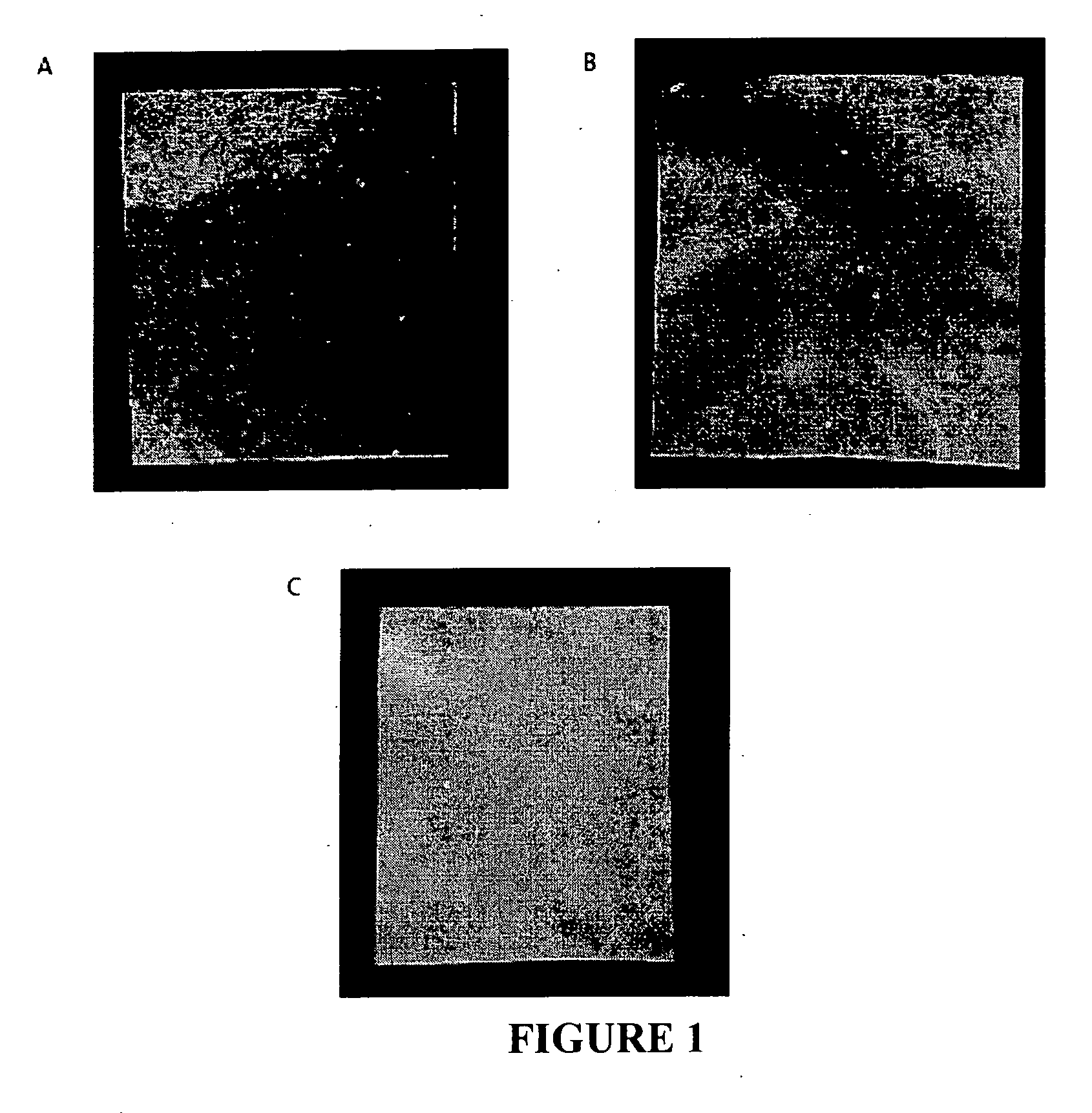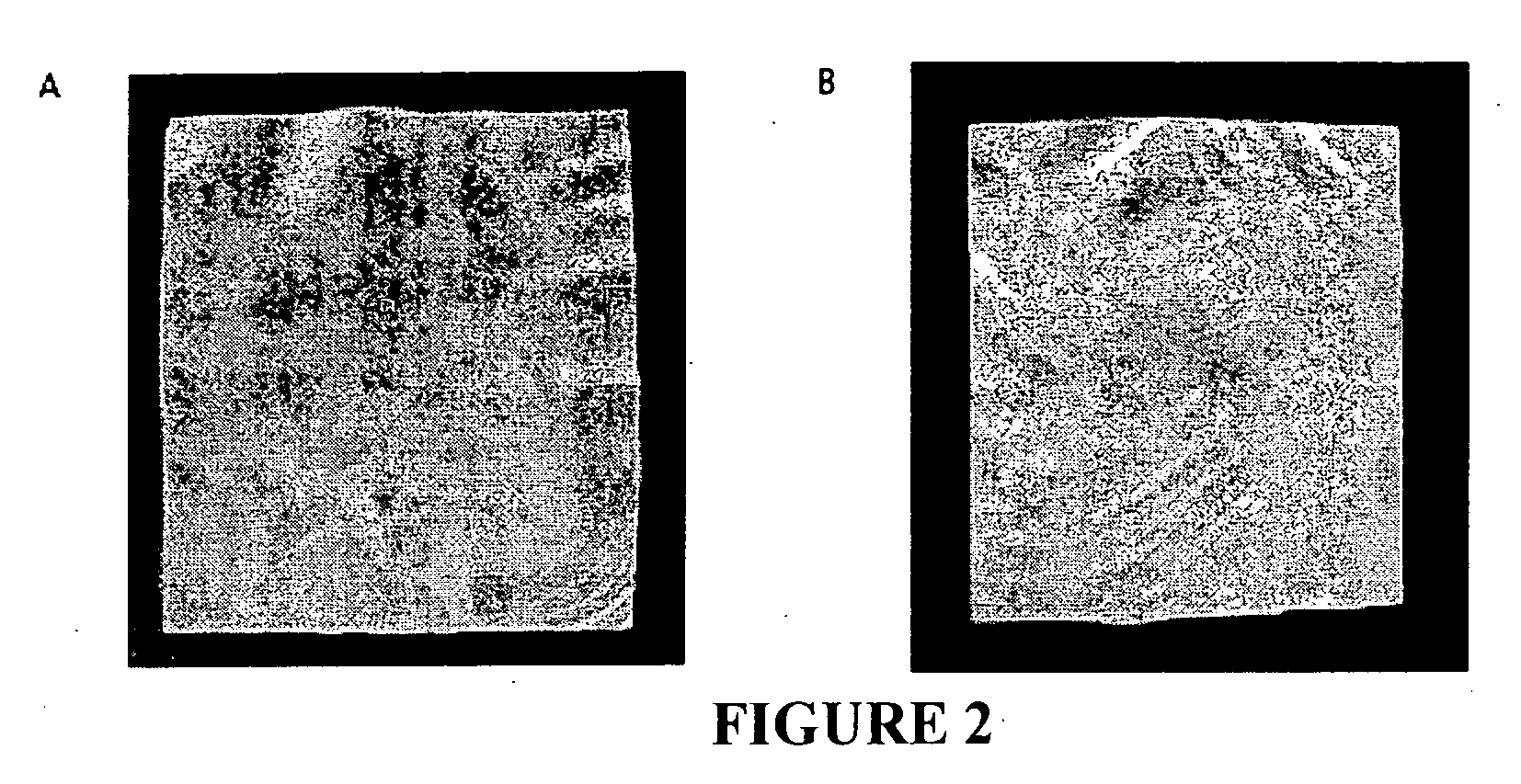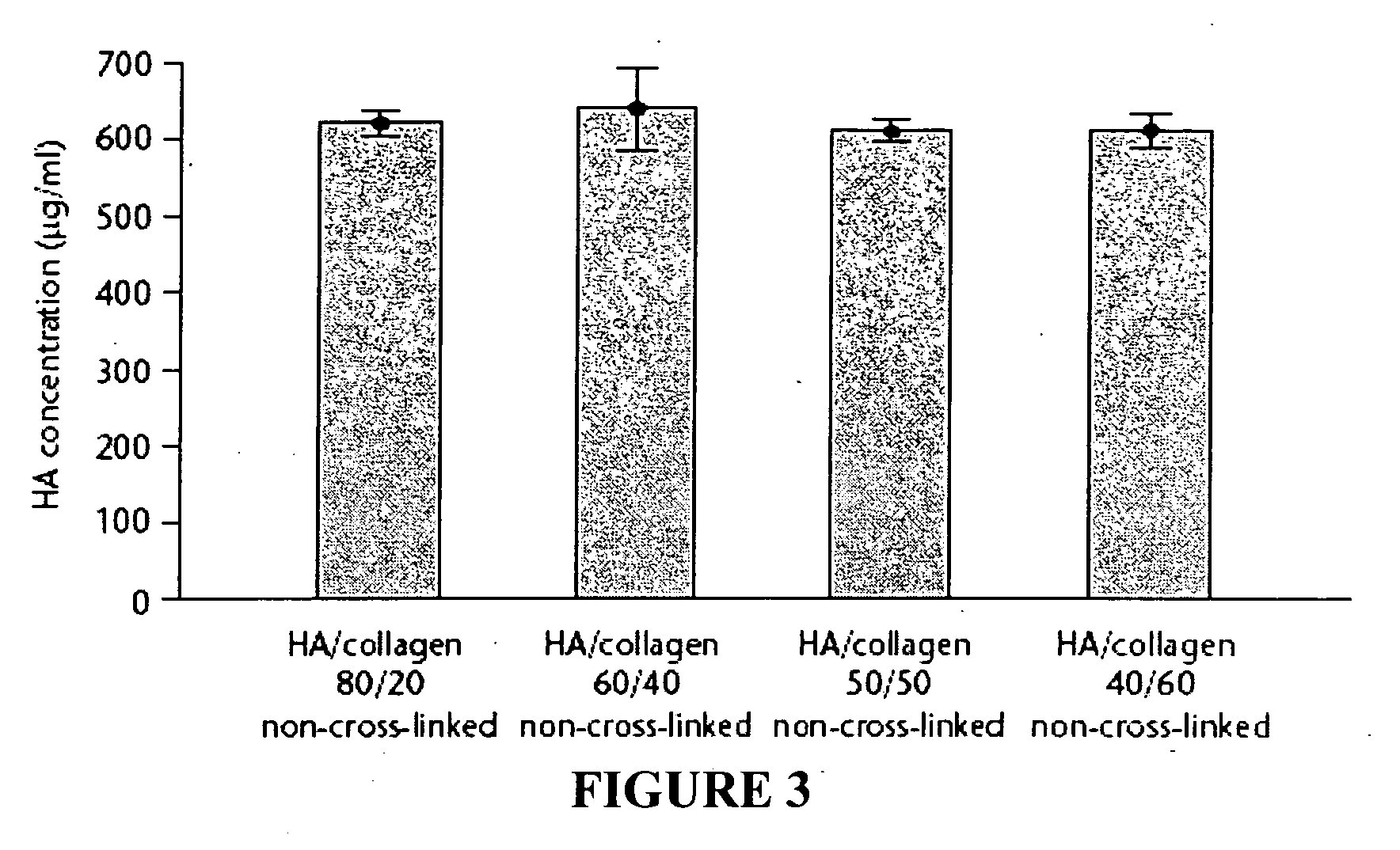Method for producing cross-linked hyaluronic acid-protein bio-composites
a technology of hyaluronic acid and protein, which is applied in the direction of peptide/protein ingredients, peptide sources, prostheses, etc., can solve the problems of difficult to form impalpable matrices in a suitable shape as desired, and achieve uniform density and porosity, reduce reaction time, and avoid the loss of polysaccharide
- Summary
- Abstract
- Description
- Claims
- Application Information
AI Technical Summary
Benefits of technology
Problems solved by technology
Method used
Image
Examples
example 1a-1g
Preparation of Hyaluronic Acid / Collagen Matrix
[0077] Hyaluronic acid (HA)(60 mg) and collagen(40 mg) were each dissolved in different solvent as shown in table 1, and then the prepared two solutions were mixed together to form a mixture that a weight ratio of HA to collagen is 3 to 2 and a solid content of the mixture is 1%.
[0078] The resulting mixture was cast into a mold made of Teflon to yield a film. The films prepared in Example 1D and 1E had the optimal morphology and physic properties.
TABLE 1Example1A1B1C1D1E1F1GHAaH2O0.1N0.1MH2OH2OH2OH2OsolventNaClCH3COOHCollagen0.5M0.1M0.1N0.1MDissolving inDissolvingA mixtureCH3COOHCH3COOHNaClCH3COOH0.5M aceticin waterof 0.5Macid,and thenCH3COOHThenadjustingand 1Nadjusting pHpH 7 byNaOHby 1N NaOHHClNaCl———30 mg———mixedwhite fibertransparencetransparencetransparencetransparencefine fiberwhite fibersolutionprecipitateand lowprecipitateprecipitateviscosity1Nfew drops,——————NaClfiberprecipitateand thendissolvedPH˜9˜8˜7˜3˜6˜7˜6morphologyfine...
example 2
Preparation of HA / Gelatin Matrix
[0079] HA (50 mg) was dissolved in 5ml of pure water. Separately, gelatin (50 mg) was dissolved in 5 ml of warm water(more than 55° C.) and then added with sodium chloride (30 mg).
[0080] The prepared two solutions were mixed together to form a 10 ml mixture of which pH is around 6.5, the weight ratio of HA to collagen is 1 to 1 and a solid content is 1%.
[0081] The resulting solution was cast into a mold made of Teflon and allowed to dry in an oven to yield a transparent film.
example 3
Preparation of HA / Collagen Matrix at Different Salt Concentration after Neutralization
[0082] HA (60 mg) was dissolved in pure water. Separately, collagen (40 mg) was dissolved in 0.5M acetic acid solution, and then neutralized with sodium hydroxide. Adjust the salt concentration after neutralization and maintain the pH at 6 by adding various volume of water, acetic acid and sodium hydroxide as shown in Table 2. The prepared two solutions were mixed together to form a 10 ml mixture in which a weight ratio of HA to collagen is 3 to 2 and a solid content is 1%.
[0083] The resulting solution was cast into a mold made of Teflon and allowed to dry in an oven to yield a film.
TABLE 2Example3A3B3CH2O (ml)5.57.08.50.5M CH3COOH3.02.01.01N NaCl1.51.00.5Salt conc of0.150.10.05neutralization. (M)
PUM
| Property | Measurement | Unit |
|---|---|---|
| temperature | aaaaa | aaaaa |
| temperature | aaaaa | aaaaa |
| thickness | aaaaa | aaaaa |
Abstract
Description
Claims
Application Information
 Login to View More
Login to View More - R&D
- Intellectual Property
- Life Sciences
- Materials
- Tech Scout
- Unparalleled Data Quality
- Higher Quality Content
- 60% Fewer Hallucinations
Browse by: Latest US Patents, China's latest patents, Technical Efficacy Thesaurus, Application Domain, Technology Topic, Popular Technical Reports.
© 2025 PatSnap. All rights reserved.Legal|Privacy policy|Modern Slavery Act Transparency Statement|Sitemap|About US| Contact US: help@patsnap.com



